![]()


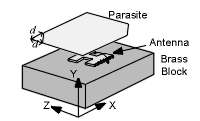
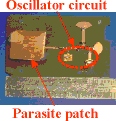
Circular parasitic polarisation can also be achieved from the truncation of the parasite antenna. A small credit card size RF link consisting of a transmitter unit with a 6GHz oscillator and a receiver unit was built using this concept.
|
|
 |

|
|||||||||||
|---|---|---|---|---|---|---|---|---|---|---|---|---|---|
 |
|
||||||||||||
|
The experimental set
up is shown above, where a limited ground size is simulated with a brass
block measuring 20 x 20 x 6 mm (i.e. length, width and depth). The gain
of this antenna was measured at -15dBi. To investigate the gain improvement
of this antenna system, a tuned parasitic radiator measuring 22 x 22 mm
is placed above the feed antenna at distance of 0.5 to 8 mm. The parasite
is truncated at 2 vertex point with d = 5 mm.
|
|||||||||||||
|
Circular parasitic polarisation can also be achieved from the truncation of the parasite antenna. A small credit card size RF link consisting of a transmitter unit with a 6GHz oscillator and a receiver unit was built using this concept. |
|||||||||||||
Simulated GaAs antenna E and H field strength
|
|
Simulated truncated parasite E field strength in phase step
|
|
Simulated and measured patterns of feed antenna
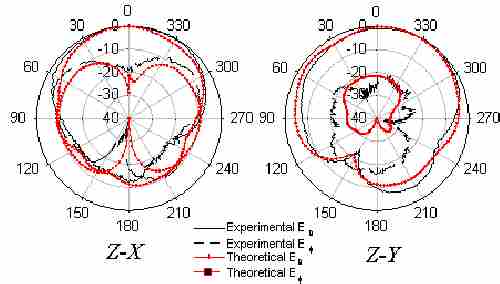 |
Simulated and measured patterns of feed antenna with truncated parasite
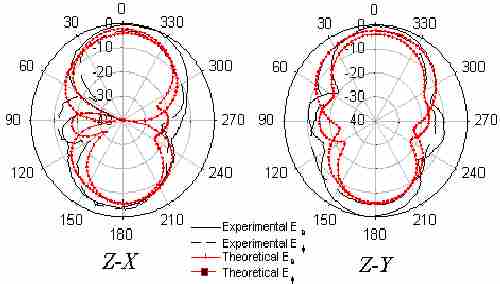 |
Simulated and measured patterns of feed antenna with truncated parasite and extended ground plane
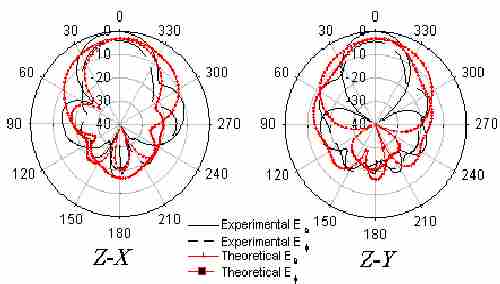 |
|
|
The gain restoration using this packaging technique can be clearly seen. The antenna design at 5.9GHz on GaAs material has a very poor gain. Gain improves to about 1dBi with the integrated packaged antenna. By optimising the ground plane, a more significant gain enhancement is realised. |
||